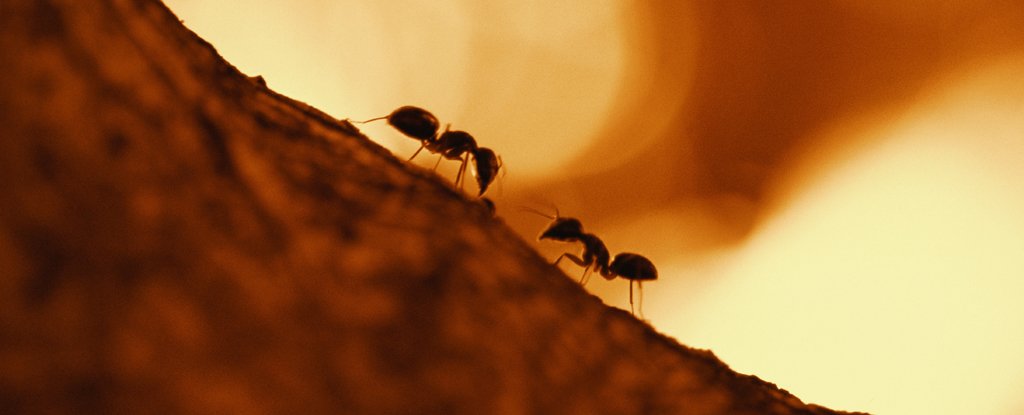Products You May Like
Colonies of ants can act a lot like neural networks, new research has revealed, with groups of the insects weighing up both external inputs and internal principles when making decisions about what to do as a collective.
In this particular study, the team behind it looked at when and how ant colonies evacuated their nests when the temperature gets too high. At some point a decision was calculated by the collective, concluding the nest should be abandoned.
To put it another way, the ants took action as a whole system in the same way that neurons take action as a whole brain, with everything working in unison. It’s the classic paradigm of benefits (continuing to conduct work) versus costs (overheating and losing colony members).
“We pioneered an approach to understand the ant colony as a cognitive-like system that perceives inputs and then translates them into behavioral outputs,” says Daniel Kronauer, who heads up the Laboratory of Social Evolution and Behavior at the Rockefeller University in New York.
“This is one of the first steps toward really understanding how insect societies engage in collective computation.”
The experimental setup involved a temperature-controlled nest, a tracking camera, and ants marked with dots. The researchers noted that with colony sizes of 36 worker ants and 18 larvae, the nest was evacuated when the temperature hit around 34 degrees Celsius (93 degrees Fahrenheit).
However, as the size of the colony increased, so did the temperature threshold that would force them to depart – with colonies of 200 ants, the insects stuck around until the heat level went up past 36 degrees Celsius (97 degrees Fahrenheit).
It’s thought excitatory and inhibitory factors are likely to be in contest among the ants, much as in a neural network. Through mathematical modeling, the team was able to show how the ants’ collective sensory response threshold was based on the balance between these two factors – not just the individual preferences of each ant averaged out.
“It seems that the threshold isn’t fixed,” says Kronauer.
“Rather, it’s an emergent property that changes depending on the group size.”
What’s not clear from this study is why the group size should have an impact on how keen the ants are to clear off as the temperature goes up. The individual ants themselves wouldn’t have known the size of the group, so something else is going on.
One hypothesis floated by the researchers is that the pheromones – or chemical messengers – passing between the ants scale up their effects when there are more ants involved. Another consideration might be that moving a larger group of ants is more of a challenge, so the benefits versus costs calculation changes.
What the study does offer is a solid, measurable framework for observing ants at the collective level. In future research, more parameters could be added and then manipulated to get a better idea of this collective decision making.
“What we’ve been able to do so far is to perturb the system and measure the output precisely,” says Kronauer.
“In the long term, the idea is to reverse engineer the system to deduce its inner workings in more and more detail.”
The research has been published in PNAS.
